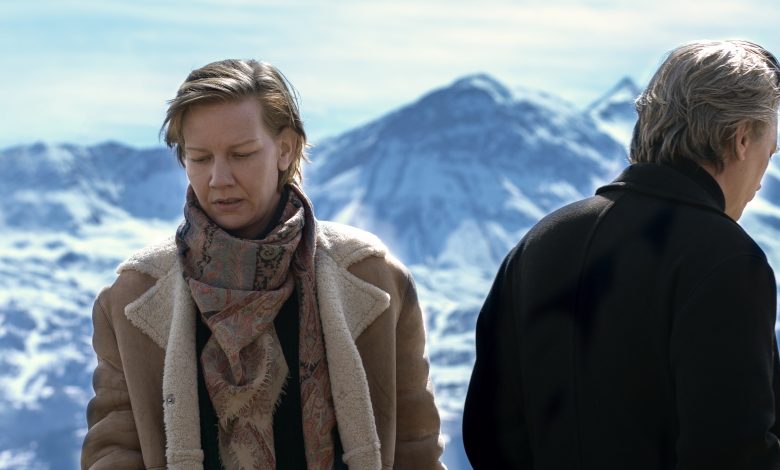Anatomy of a Fall: Breakdown of the family and the courtroom
Spoilers ahead

Francesca Rico ‘27 / Emertainment Monthly Staff Writer
French filmmaker Justine Triet’s Anatomy of a Fall bait-and-switches the audience by presenting itself as a crime thriller but then delves into something much deeper. It displays a breakdown of familial and romantic relationships and the contradictions and fragilities that lie within them. The film also reveals the exploitative side of criminal trials that deal with very sensitive topics.
The film begins with the death of Samuel (Samuel Theis), seemingly as a result of a fall from his home’s attic window. His son, Daniel (Milo Machado Graner), finds his father dead, and Sandra (Sandra Hüller), his wife, rushes down the stairs after seeing the body. The film then shows the trial that follows his death as Sandra is accused of murder. While her defense is that Samuel committed suicide, she truly believes his death was accidental.
Triet successfully pulls the audience into this story as it unravels the truth behind the characters’ relationships and reveals the complexities of families.Triet uses the trial to show how real moments of suffering can be taken out of context and sensationalized as they become seen as something calculated and villainous. This is shown when the prosecutors accuse Sandra for causing the death of her husband.
Furthermore, misogyny is a main topic in this film. The prosecution blames Sandra’s success as a writer for Samuel’s own shortcomings and feelings of failure. Her life then becomes something that revolves around her husband. It is not until the end of the trial when her son Daniel makes a testimony explaining his understanding of his father’s depression when the tide seems to shift and the jury, as well as the audience, believe that Samuel was not murdered by Sandra, and did in fact commit suicide. This begs the question of why there is more trust in the pre-teen son than there is in the wife of the victim. The audience is left wondering this: why is the word of a boy more trustworthy than that of a woman?
The cinematography in this film alone makes it worth watching. The soft glow of the lights in the scenes that take place in the home create an atmosphere of tenderness and comfort. There is also a tinge of sadness as many of the scenes in the home occur at night. The darkness from this is a reminder of the loneliness that has been forced upon the family with the death of Samuel. Contrasting that with the bright lights from the courtroom pushes the audience into an unnerving place so that we understand how Sandra and Daniel feel a spotlight has been thrusted upon their lives without their consent. The cinematography creates both intimate and vulnerable atmospheres throughout the film.
One of the most outstanding elements of the film is the actors’ performances; most notably, those of Sandra Hüller and Milo Machado Graner. Hüller brings to life a character who represents the contradictions that make up real people, impressing onto the audience the understanding that no one is just good or bad. Graner expresses the connection between courage and vulnerability, and the power it takes to make certain decisions. Both actors leave the audience feeling as if they have been brought into the lives of two very real people.
At the end of the film, when the trial ends with Sandra’s win, Triet provides the audience with reality, not closure. Sandra can now return home, but what is she left with? There is no relief in knowing that her husband committed suicide, and even more, that she had to prove she did not want him dead. Sandra has won, but at what cost? Anatomy of a Fall perfectly delves into the intricacies and heartbreak of suicide, lost love, and the debilitating aftermath.